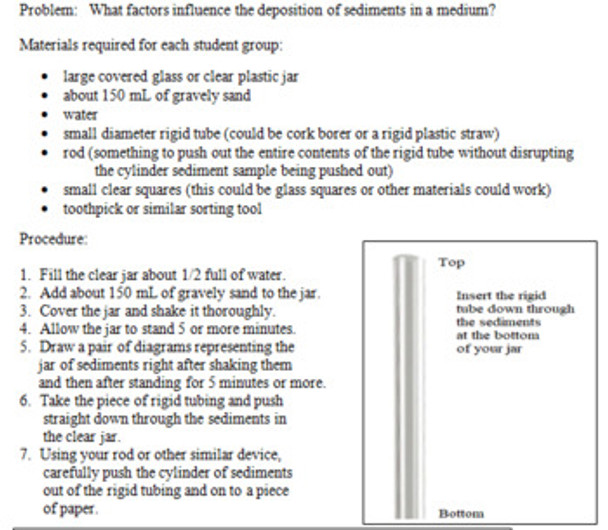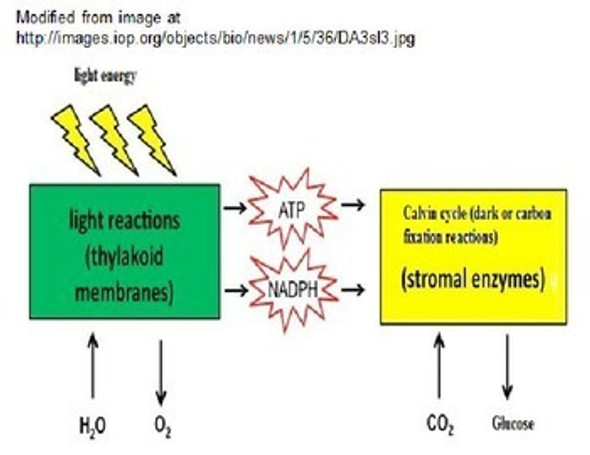Description
This zip file contains activities (37 pages of student handouts) which can be used to compose a unit involving Deposition. Concepts that are addressed include but not limited to include; factors influencing deposition, erosional-depositional stream systems, glacial deposition, wind deposition and wave deposition. The learning objectives and specific contents of this set of materials is listed below. This set of activities is suited for many earth science, environmental science or physical science classes. With teacher guidance, many components in these materials are adaptable to an enriched middle level science curriculum.
All documents are in PowerPoint, word or pdf format to allow you to edit the documents to meet your needs. Many of the activities in this package of activities are well suited and easily modified for use in distance learning environments. Answer keys for all student activities are provided.
The specific contents of materials in the package are as follows:
- Learning Goals and Objectives (Including NGSS, Common Core and NY State Earth Science Core Curriculum) (2 pp.)
- Deposition Completion Notes (8 pp.)
- PowerPoint to accompany the Completion Notes (28 slides)
- Deposition Worksheet (50 questions) (11 pp.)
- Deposition Quiz (40 questions) (12 pp.)
- Sediment Size and Settling Time Investigation ( 4 pp.)
Learning Standards and Objectives
NGSS Standards: HS-ESS-2-5
Common Core State Connections: ELA/Literacy: WHST 9-12.1
New York State Physical Setting/Earth Science Core Curriculum
Standard 1 Scientific Inquiry: Key Idea 2
Standard 6 Interconnectedness: Common Themes Systems Thinking: Key Idea 1
Standard 4: Performance Indicator 2.1: Major Understandings 2.1 t, 2.1 u, 2.1 v
Learning Objectives
Upon the completion of this unit the student will be able to:
1. define the term deposition.
2. define the term precipitation.
3. recognize that slowing streams or winds usually result in deposition.
4. use a reference table to predict the size of the sediments deposited with different stream velocities.
5. relate the size, shape and density of sediments to their deposition rate.
6. recognize that increased evaporation or decreased temperature will reduce the ability of a solution to hold dissolved minerals.
7. distinguish between unsorted and sorted sediments.
8. recognize that glaciers usually deposit unsorted sediments.
9. explain what is meant by graded bedding.
10. describe the environment of formation associated with graded bedding.
11. explain what is meant by horizontal sorting.
12. describe the environment of formation associated with horizontal sorting.
13. recognize that the sediments in deltas are usually horizontally sorted.
14. discuss the potential, kinetic and total energy relationships in an erosional-depositional system.
15. explain how total energy is lost by a stream due to friction.
16. recognize deposition occurs when the kinetic energy of an erosional-depositional system decreases.
17. recognize that deposition tends to occur on the inside curve of a meander.
18. recognize that an increase in stream volume increases its ability to carry sediments.
19. recognize that a dynamic equilibrium exists between erosion and deposition in a stream system.
20. explain how levees and flood plains are formed.
21. describe the process forming oxbow lakes.
22. discuss how the following features of glacial deposition are formed; moraines, terminal moraines, drumlins, eskers, erratics, glacial till, kettles and outwash plains.
23. describe how the Finger Lakes in New York State were formed.
24. discuss how glaciers have shaped the topography of Long Island, New York.
25. explain how most beaches were formed.
26. explain how longshore currents are formed and discuss their role in erosion and deposition.
27. briefly describe how sandbars and barrier islands are formed.
28. explain why the wind can usually transport only sand and smaller sediments.
29. recognize slowing wind may result in the deposition of sediments.
30. discuss how the wind influences the formation and appearance of sand dunes.
31. explain why the sand particles in sand dunes are very rounded and frosted in appearance.
Terms of Use
Purchase of the product is for classroom use by the purchaser only. It is a violation for individuals, schools, and districts to redistribute or sell this item on the Internet or to other individuals. I do encourage you to use and edit these documents to suit your needs with your own students in distance learning environments.
This work is licensed under a Creative Commons Attribution-NonCommercial-ShareAlike 4.0 International License.


















